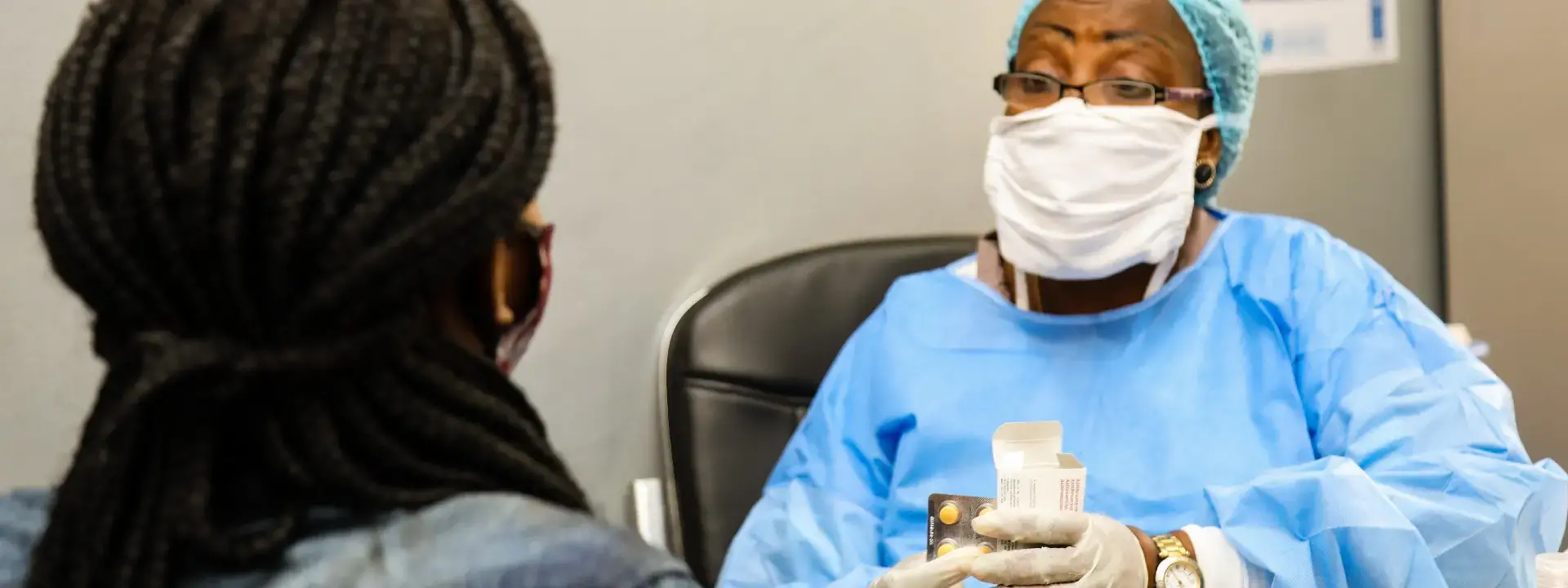In the Democratic Republic of Congo (DRC), the HIV/AIDS pandemic situation is generally almost stationary, but specificities persist due to the DRC's population, estimated at over 105,249,000 in 2021, 51% of whom are women and 40% of whom live in urban areas.
Indeed, (i) the population under the age of 15 accounts for 46%; (ii) those aged 15 to 49 represent 50%; and (iii) those over 60 represent only 4% of the general population.
- The burden of the response is therefore borne by a working population that represents no more than 30% of the population and is itself the most affected by HIV/AIDS.
- New infections among 10- to 24-year-olds account for 61.7% of all new infections according to SPECTRUM projections. This juvenileization of the HIV epidemic raises fears of an increase in HIV prevalence, particularly due to the very high multifactorial vulnerability of this target group (ambient poverty, propensity for risk-taking, poor access to HIV prevention methods, etc.).
Significant progress was made between 2010 and 2020, with increased coverage of HIV treatment to prevent vertical transmission for pregnant women living with HIV from 45% in 2010 to 85% in 2020 and a 53% reduction in new HIV infections among children over the same period. However, this progress was not sufficient to achieve any of the global targets set for the end of 2020. New targets have been set to end AIDS among children, adolescents, and mothers in the new Global AIDS Strategy.
Similarly, in the DRC, ART (Anti-Retroviral Therapy) coverage in 2022 was 84% for the general population, 62% for pregnant and breastfeeding women, and 44% for children. While progress has been made for the general population, progress is slow for pregnant women and children, and efforts through innovative strategies are needed to achieve the elimination of AIDS by 2030.
UNFPA supports the fight against HIV/AIDS in the DRC in the area of prevention of HIV transmission, particularly targeting the most at-risk populations, including young people and women of reproductive age.
To this end, UNFPA is working to support the efforts of the National Multisectoral AIDS Program in the DRC in preventing the sexual transmission of HIV and preventing mother-to-child transmission of HIV.
Several activities were carried out in humanitarian contexts, particularly in the eastern provinces of the country, which are facing a recurring humanitarian crisis: Supplying healthcare facilities with emergency kits for the treatment of STIs, blood transfusion kits, and free distribution of male and female condoms for dual protection against STIs and unwanted pregnancies.
Awareness-raising among people at high risk of infection; promoting condom use; capacity building for clinical and community providers, including training peer educators; and supporting youth and adolescent networks and associations in organizing awareness-raising campaigns and condom distribution through fixed strategies and motorized caravans also benefited from UNFPA support.
In relation to the coordination of the fight against HIV, UNFPA actively participates in the activities of the United Nations Joint Team for the Fight against HIV/AIDS and other consultation frameworks, notably in the Coordination of the HIV Prevention Working Group (GPC).


